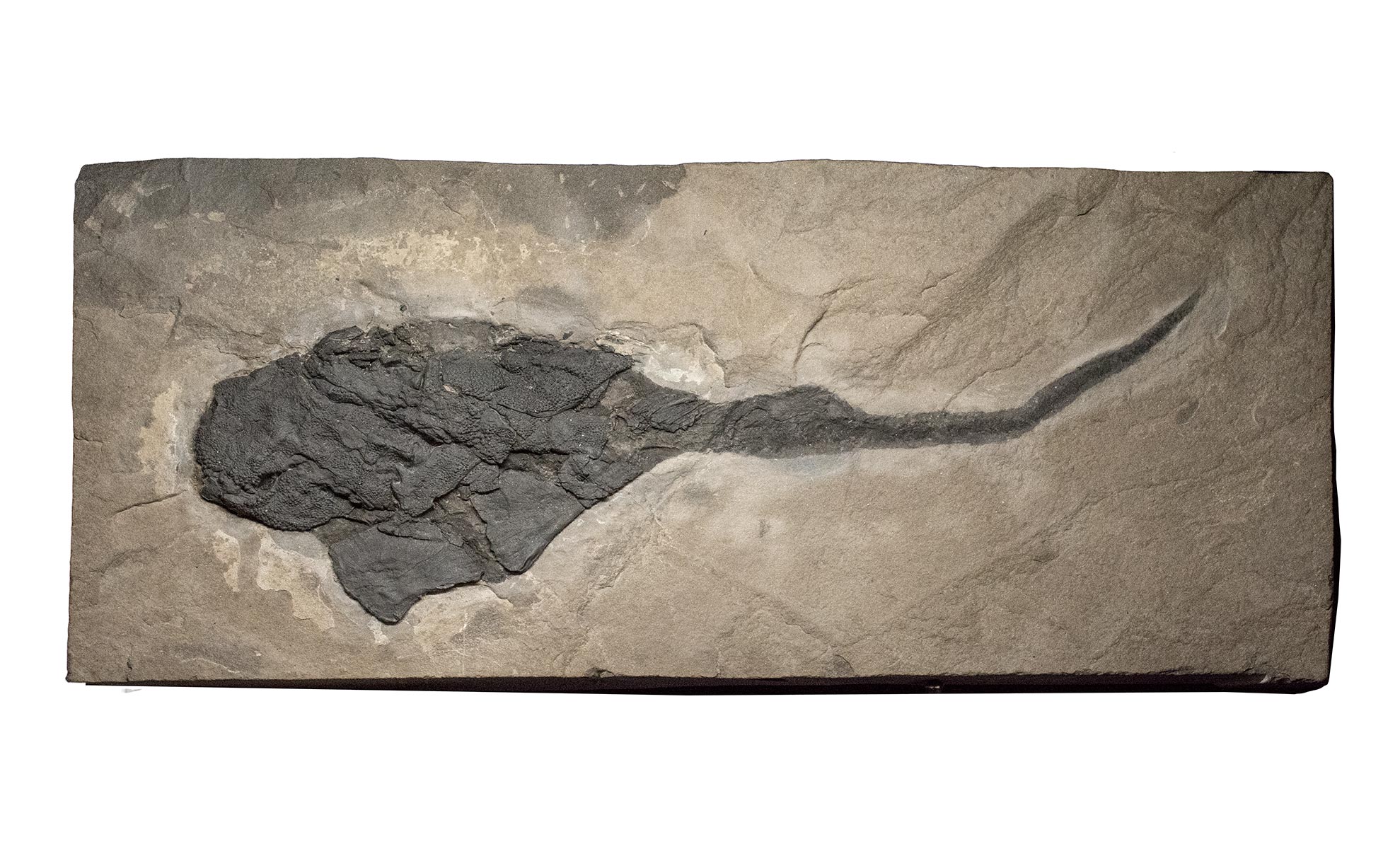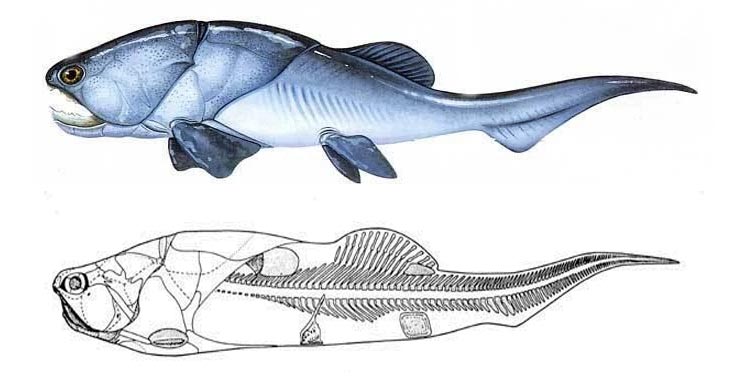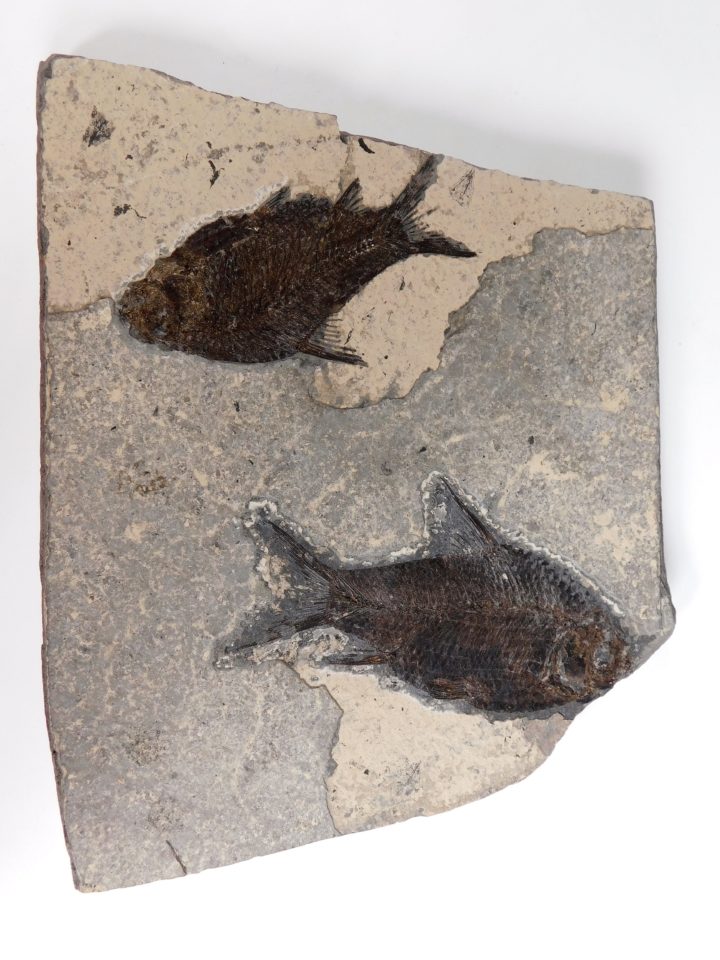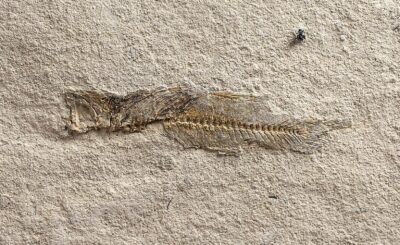Description
Coccosteus cuspidatus
Devonian
Old Red Sandstone
Orkney, Scotland
Very large 285mm placoderm fish on 360mm x 155mm matrix. Fairly 3D preservation, similar Achanarras, is unusual for Orkney. Near perfect.
Coccosteus is an extinct genus of arthrodire placoderm fish that lived during the Devonian period, which occurred approximately 416 to 359 million years ago. It is known from fossils found in North America, Europe, and Asia.
Coccosteus was a heavily armored fish, with a thick bony skull and large sharp teeth. It had a flattened body and could reach up to two feet in length. The armor plates that covered its body were made of bone and provided protection against predators.
Coccosteus is known for its unique method of feeding. It had a hinge in its jaw that allowed it to open its mouth extremely wide, creating a vacuum that sucked in prey. Its teeth were then used to crush and grind its food.
Coccosteus is an important genus for understanding the evolution of vertebrates. It is considered to be one of the earliest jawed fish and is a member of the arthrodire group, which includes some of the most heavily armored fish that ever lived.






